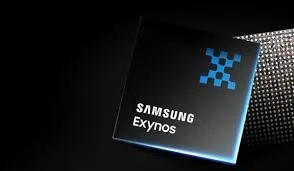Samsung is making strides in semiconductor technology with its Exynos 2600, built on the company’s advanced 2nm Gate-All-Around (GAA) process. Recent reports indicate that the trial production run has achieved a 30% yield—a significant improvement for Samsung, though still behind TSMC’s impressive 60% yield for its own 2nm process.
Table of Contents
Why This Matters for Samsung
The semiconductor industry is highly competitive, and manufacturing efficiency is a key factor in maintaining an edge. Despite trailing behind TSMC, Samsung’s 30% yield marks a notable improvement, especially considering its struggles with 3nm production. A higher yield means more functional chips per wafer, leading to better efficiency and cost-effectiveness. While 30% is far from the industry-expected 70% required to attract big customers like Qualcomm and MediaTek, it signals positive momentum for Samsung’s semiconductor division.
Samsung’s foundry business has faced challenges in gaining the trust of major clients due to previous yield issues, particularly with its 4nm and 3nm nodes. However, the 2nm process is a chance for the company to rebuild its reputation. If the yield continues to improve, Samsung could secure orders for flagship mobile processors, AI chips, and high-performance computing components in the near future.
Exynos 2600: A Game Changer?
The Exynos 2600, codenamed ‘Ulysses,’ is expected to power Samsung’s next-generation flagship devices, potentially making a return to more premium smartphone models. With the company currently relying on Qualcomm’s Snapdragon 8 Elite for its Galaxy S25 series, improving its in-house chip production could significantly cut costs and reduce dependency on external suppliers.
Samsung has been working to make Exynos processors more competitive by optimizing power efficiency, thermal management, and overall performance. The 2nm GAA process introduces significant enhancements over the previous generation, promising better transistor efficiency and improved performance per watt.
Beyond smartphones, Samsung’s advancements in chip manufacturing could have broader implications for AI, automotive, and data center applications. As demand for high-performance and energy-efficient processors continues to grow, the ability to mass-produce cutting-edge chips will be a crucial factor in Samsung’s long-term success.
Challenges and Opportunities
Although the 30% yield is a step forward, Samsung still faces significant challenges before it can compete directly with TSMC in high-volume chip manufacturing. The company needs to:
- Improve Yield Efficiency: Reaching the 70% yield mark is crucial to securing large-scale orders from major tech companies.
- Strengthen Client Trust: Overcoming past production setbacks and demonstrating consistency will help attract major customers.
- Expand Production Capacity: Ensuring that its facilities are prepared for mass production without compromising quality will be vital for scaling up.
- Advance GAA Technology: While Samsung is ahead of TSMC in adopting GAA, it must optimize its implementation to maximize benefits.
Despite these hurdles, Samsung’s continued investment in semiconductor R&D and infrastructure indicates that it is committed to competing at the highest level.

What’s Next?
Samsung is set to begin mass production of its 2nm SF2 process in the second half of 2025. Compared to SF3, SF2 boasts a 12% performance boost, 25% better power efficiency, and a 5% reduction in area. These improvements could make the Exynos 2600 more competitive, increasing its appeal for high-end smartphones and other advanced computing applications.
If Samsung can push its yield closer to TSMC’s levels, it could re-enter the competitive foundry space and regain lost market share. The company’s long-term goal is to become a dominant force in semiconductor manufacturing, rivaling TSMC and even Intel in the coming years.
Final Thoughts
While Samsung has a long way to go before its 2nm process becomes a commercial success, achieving a 30% yield is a step in the right direction. If the company can continue optimizing its technology, it may soon rival TSMC and secure major chip manufacturing contracts in the near future.
The semiconductor race is far from over, and with rapid technological advancements, the landscape could shift in Samsung’s favor. Stay tuned as the battle for semiconductor supremacy heats up!








